Garden of Native Prairie Plants Botany and Ethnobotany
by Penny Dodd & Marion Jankunis
The Garden of Native Prairie Plants is a cooperative project between the Lethbridge & District Horticultural Society, Galt Museum & Archives and Alberta Native Plant Council.
Introduction
From the earliest times, people have sought out plants for medicinal purposes. Perhaps less spiritual, but no less inquisitive and experimental, gardeners and gatherers from across the ages have dedicated much of their lives to finding plants that could be used for food, clothing, shelter and ornament. Certainly, nomadic people depended on the plants they could find in order to sustain themselves. Over the past twenty-five thousand years, the First Nations people of the prairie developed a knowledge and understanding of the local plants that could help or harm them.
The historical relationship between First Nations people and the plants they used was complex. Dr. Alex Johnston reports that the Blackfoot knew and used about one hundred eighty-five species of plants for purposes of “religion and ceremony, crafts and folklore, birth control, medicines, horse medicines and diet.” Many of these plants can be found in The Garden of Native Prairie Plants, created to commemorate the centenary of the Lethbridge and District Horticultural Society, on the grounds surrounding the Galt Museum & Archives.
The information presented here describes the plants in the Garden, along with their uses by First Nations people. If your interest has been piqued, acquire one of the books cited in the references below, and let your feet take you into the Garden, and then to the grasslands and the hills beyond to observe these plants in their natural environment.
References
Budd, Archibald Charles. 1979. Budd’s Flora of the Canadian Prairie Provinces. Canadian Government Publishing Center, Hull, Quebec.
Best, K. F. and Looman, J. 1979. Budd’s Flora of the Canadian Prairies. Canadian Government Publishing Centre, PQ.
Flanagan, June. 2005. Native Plants for Prairie Gardens. Fitzhenry & Whiteside Ltd., Markham, Ontario.
Hungry Wolf, Adolf. 1989. Teachings of Nature. Good Medicine Books, BC.
Jennings, Neil. 2007. Prairie Beauty. Rocky Mountain Books, AB.
Johnston, Alex. 1987. Plants and the Blackfoot. Occasional Paper No. 15., Lethbridge Historical Society, AB.
Kershaw, Linda. 2000. Edible and Medicinal Plants of the Rockies. Lone Pine Publishing, AB.
Kimball, Shannon Fitzpatrick and Lesica, Peter. 2005. Wildflowers of Glacier National Park and Surrounding Areas. Trillium Press, USA.
Kindscher, Kelly. 1987. Edible Wild Plants of the Prairies. University Press of Kansas
Royer, France and Richard Dickinson. 2007. Plants of Alberta. Lone Pine Publishing, AB.
Van Bruggen, Theodore. 1983. Wildflowers, Grasses and Other Plants of the Northern Plains and Black Hills. Badlands Natural History Association, SD.
Vance, Fenton R, Jowsey, James R, and McLean, James S. 1984. Wildflowers Across the Prairies. Douglas and McIntyre, Vancouver, British Columbia.
Wilkinson, Kathleen. 1999. Wildflowers of Alberta: A Guide to Common Wildflowers and Other Herbaceous Plants. University of Alberta Press and Lone Pine Publishing, AB.
What’s in the Name
To fully describe any particular plant, we can place it into the phylogenetic system devised by botanists. This system is as follows, in increasing order of group size:
Species: the plants of a single type
Genus: a group of related species
Family: a group of related genera
Order: a group of related families
Class: a group of related orders
Subdivision: a group of related classes
Division: a group of related subdivisions
Placing Geum triflorum Pursh (three flowered avens) into this scheme would look like this:
Species – triflorum
Genus – Geum
Family – Rosaceae
Order – Rosales
Class – Dicotyledoneae
Subdivision – Angiospermae
Division – Spermatophyta
Note that all of the group names, with the exception of the species, are capitalized, and that all group names are italicized. This is by convention. Also note that the person who first described the plant is credited after the botanical name. In the above example, this is Pursh. When referring to a particular plant in books or conversation, we often just use the genus and species designations, knowing that the other designations are implied.
The common name or names of a plant tend to be descriptive of some characteristic of the plant, and are not assigned scientifically. In the above example, the name, ‘three flowered avens’ refers to the usual appearance of clusters of three blossoms per stem in this species.
Shrubs and Vines
Clusters of small white flowers in June create a mound of white in coulees and ravines where this vine climbs, spreading 3–6 metres over fences, shrubs and trees. In late summer and fall, clusters of feathery seed heads develop that hang on the vines into the winter.
Western clematis. Photo by Penny Dodd
Common along riverbanks and in moist meadows, the 1–3 m tall shrub often has bright red bark. In June it produces clusters of flat topped white flowers that mature into white berries 4–6 mm across.
This shrub or small tree reaches 1–5 m in height, and has many stout thorns, 2–7 cm long, along its branches. Clusters of white flowers in May mature into red or orange berry-like pomes about 1 cm across—like very small apples. The fruits, called haws, and the spines on the branches are combined in the common name—hawthorn
In late May and early June, the small yellow flowers of this grey-leaved, 1–4 m tall shrub, perfume the air with a fragrance reminiscent of jasmine. The wood, however, is not good for a campfire: when burned, it gives off an odour of human excrement.
A small tree or shrub up to 6 m tall, the chokecherry is very common in ravines and open woodlands throughout the prairies. White flowers in a dense cylindrical raceme 5–15 cm long mature to astringent purple black fruit.
On south facing coulee slopes or river banks, this small shrub (1–2 meters high), has dense clusters of small yellow flowers at the end of its branches in May before any leaves appear. The flowers have a faint but unpleasant odour, hence the common name.
The common name of this 1–2 m tall shrub refers to the showy red-tipped yellow blossoms that smell strongly of cloves. Unlike other currants, the stems of the golden currant lack spines. The tart, juicy fruit ripens in July, and may vary from pale yellow to shades of red or black. It is often speckled with tiny yellow bristles.
Most parts of the rose are edible—flower buds, petals, young leaves—but the hips are most nutritious. An analysis of the composition of rose hips revealed that 100 grams of hips contained 69,550 International Units of vitamin A (Johnston 42), and three hips can contain as much vitamin C as an orange.
This 30–75 cm tall shrub spreads by suckers to form a low thicket in moist areas. Two or three pale pink, bell-shaped flowers occur in small clusters at the end of stems and in the axils of the greyish green leaves. The waxy, white 6–10 mm berry-like fruit give this plant its common name.
Wildflowers
On dry slopes, the cluster of pinkish white flowers nods at the end of a round stem 10–50 cm tall. When crushed, the leaves and stalks small strongly of onion.
Found on the dry prairie, at 5–25 cm tall with white to pale pink flowers, the prairie onion is a small cousin to the nodding onion. The bulb’s mesh-like outer covering gave rise to its species name textile.
The leaves of the windflower look very similar to those of the prairie crocus, and both grow is the same habitat. The plant may be from 15–50 cm tall with solitary flowers that are usually white or pink and from 12–20 mm across.
The common name of this plant accurately describes the white blossoms; they feel soft and rounded like the pads of a kitten’s foot. The flowering stems, mostly less than 15 cm tall, grow out of the dense spreading mat of small grey leaves.
Common on the grasslands, this perennial has a woody base, but the new growth is soft and silky. Its silver grey foliage is very aromatic when handled. Growing 15–50 cm high, the stalks end with inconspicuous yellow flowers borne in loose racemes.
Showy milkweed is well named: its purple-pink flowers are displayed near the end of tall stalks in round clusters 5–7 cm across, and a white sticky juice pours out if its stems or leaves are wounded. The dramatic seed pods are soft, large (7–10 cm) ovals that release seeds dispersed by the wind on long silky hairs.
This many stemmed plant may grow to 60 cm in height with several stalks per stem. The deep purple-blue flowers form a dense, narrow and blunt-topped mass at the top of each stem. The common name refers to the smooth seed pod that has two grooves on its top.
The 20–35 cm stems of ground plum sprawl across the dry grassland. Its leaves are composed of many leaflets that are smooth on top and hairy below. Typical sweet-pea type flowers are white with the keel, or bottom portion of the flower, having a purple tinge. The seeds are in distinctive, round pods 15–25 mm across
This plant has many stems 30–60 cm high, and each produces three or four stalks of drooping white flowers about 2 cm long. The dark grey-green leaflets number 25–30 per leaf, and are densely hairy on the bottom, but smooth on top.
The leaves of this mat-forming plant are a distinguishing feature—they are compound, with three leaflets, like a clover. The leaves are clustered thickly around the base of short-stemmed white flowers, partially obscuring the pea-shaped blossoms.
This erect or spreading perennial with its grey-green leaves may be up to 40 cm tall. Its round cluster of flowers can be white or pale reddish to purple.
This plant has several stems that grow from one clump. The stems may be 30–40 cm long, but they are partly lodged, and reach upward about 15–20 cm. The cream-white flowers form clusters at the end of the stalks. The leaves of this milk-vetch are distinctive—they are numerous, narrow linear leaflets 2–6 cm long.
With a nodding, bell-shaped blue blossom at the end of a slender stem, typically 20–35 cm tall, the harebell blooms in July and August. It grows on grassy slopes and open areas. One of over two hundred and fifty Campanula species worldwide, this particular one is the famous “bluebell of Scotland”.
According to Wilkinson, some First Nations people ate the raw berry, and children sucked the nectar from the flowers. (48) However, the fruit may cause nausea.
This inhabitant of the dry prairie forms spiny cushions 3–20 cm across. It can produce flowers when the plant is so small that its blossom is bigger than it is. Flowers are purple- red, and 3–5 cm across. In fall the ripe fruit becomes sweet and juicy and reminiscent of kiwi.
This low growing, often prostrate, plant has narrow leaves, and dense, cylindrical flower spikes at the end of the flowering stalks.
This low growing plant has narrow leaves, and dense, cylindrical flower spikes at the end of the flowering stalks.
This deep-rooted perennial forms small tufts, or clumps, of basal grey-green leaves and many stems 10–30 cm tall. The flower heads, one to three or four per stem, are 2–3 cm across with many (up to one hundred) narrow, white ray florets that look like thin petals around a yellow centre.
The flowers of this small plant are very similar to those of the tufted fleabane (Erigeron caespitosus), but sometimes the blossoms have just the yellow central disk florets without the white ray florets. Also this plant is usually shorter, being only 5–15 cm tall. The distinctive feature of compound fleabane is its finely divided leaves.
Look for small white blossoms, later bright red fruit, on runners that spread across the ground. They grow best in gravely soil. The scientific name Fragaria means fragrant, and refers to the smell of the ripe fruit. Anyone who has eaten the small red berries knows the wild fruit is delicious, with much more flavour than domestic fruit.
Blooming in early spring, this charming little flower is well described by its common name. The blossom, up to 35 mm long by 10 mm wide, nods at the top of 10–30 cm tall stems.
Large, bright yellow flowers, surrounding a central disk of crimson, are showy at the ends of 20–60 cm stems. What appear to be petals are actually individual flowers called ray florets. This member of the daisy family blooms from June to August across the prairies on dry hillsides and in open areas.
This slender, 10–30 cm tall, flower is not very showy because the blossoms are small and open only one or two at a time. Also, it fully opens only at night. Typical of night blooming flowers, which are pollinated by moths, the protruding stamens are conspicuous and, in this plant, red-tipped.
On the dry open prairie, the stem rises 20–40 cm above basal leaves, and supports three nodding, purplish-pink flowers. By late June, the seed-heads have formed erect clusters of feathery styles. Large patches of these plants that have gone to seed look like a smoky haze drifting across the prairie, hence their common name, prairie smoke.
Three species of Hedysarum grow on the prairies. They are sometimes referred to as sweet-vetch or sweet-broom. Typically, their pea-like flowers grow in long slender wand-like clusters. Northern hedysarum’s reddish purple flowers often grow in one sided clusters up to 15 cm long.
This plant’s common name likely originates in the milky latex secreted by its roots. A distinguishing feature is the mostly basal leaves that are divided into three to seven narrow segments. The flowers, about 2 cm across, form a flat topped yellow cluster.
A late summer splash of pinkish-purple on a dry, sandy hillside, or even the edge of a gravel road, draws attention to the dotted blazing star flower. The plant grows as a clump, 10–30 cm tall, with the flowers in a dense cluster along the top half of each stalk.
Named for the explorer Captain Meriwether Lewis, this plant is a member of the flax family. The scientific name Linum acknowledges flax as the source of linen fibre. The pale blue flowers, 20–35 mm across, which occur in clusters atop 20–60 cm stems, last only one day.
Most often found in sandy soils, the yellow flax, at 15–40 cm tall, is smaller than blue flax. Its linear leaves are few in number, stiff or rigid (as the scientific name suggests) and are easily broken off the stem. The flowers are a smaller, yellow version of their blue relative’s blossom.
This plant’s stiff stems, with narrow inconspicuous leaves, account for its common name. One bright pink flower head develops at the end of the 15–20 cm tall stem. It grows on ridges and dry areas.
Growing to 60 cm tall on eroded hillsides or dry banks, these thistle-like plants produce fragrant creamy-white flowers with five petals and five petal-like stamens. This explains their name decapetala, or ten petals. The flowers, a dramatic 7–10 cm across, open at night as they are pollinated by moths.
This member of the mint family is easily recognized as such by its square stems. Its distinctive fragrance, similar to the oil of the bergamot orange used to flavour Earl Grey tea, is its other distinguishing feature, and the reason for its common name.
This low growing plant has shiny leaves that look like flat leaved parsley, and bright yellow flowers that form an umbrella-like cluster. It grows on dry, exposed slopes.
Showy, sweet-scented white (fading to pink) blossoms, up to 8 cm across open above this low-growing leafy rosette, found on dry hillsides of gumbo or clay soil. Blossoms occur through summer from June to August. The flowers, which are pollinated by moths, open at night, and each blossom lasts only one day.
On eroded slopes in the driest conditions, this cactus with its flat, paddle-shaped segments (12–15 cm across) can spread into a clump that measures 1 m or more wide. The thorns, 1–5 cm long, are dangerous as they can pierce leather, and will cause severe discomfort if stepped on.
Blooming early in the season when range grasses are just beginning to grow, pale yellow pea-shaped flowers appear, above basal leaves, on stems 10–50 cm tall. Johnston reports the Blackfoot called this plant “rattle weed”, as the ripe seed pods rattle loudly when shaken, and that the leaves were chewed to alleviate sore throat.
Formerly known as Psoralea esculenta, Indian breadroot has bluish-purple pea-shaped flowers densely clustered on stems that are covered with white, silky hairs. A short plant, only 10–30 cm tall, it looks like a stunted lupine. Its scientific name esculentum means edible, and refers to the thick tuberous root—the feature that made this plant important to all people who lived on the plains.
Beardtongue flowers are tubular, and have two lips with the top lip divided into two lobes, and the bottom into three lobes. Many species have a sterile stamen that is covered with hair, hence the common name. Smooth blue beardtongue (P. nitidus) is a showy plant with thick leaves covered with a greyish bloom, and flowers that occur in dense clusters at the leaf axils on the top portion of the stem.
Blooming as early as April, this wildflower’s common name is appropriate. The plant forms a mat of short, woolly leaves that look like moss, and has typical phlox flowers about 10 mm wide.
Widespread and common across prairie grasslands and in the Rocky Mountains, this flower is among the first to bloom in spring. It is distinctively covered with silky hairs, and legend tells that the Great Spirit gave the crocus its fur coat to keep it warm during cold spring nights.
Prairie coneflower blossoms are composed of a grey to purple central cone or cylinder surrounded by a skirt of yellow “petals”, which are actually individual flowers known as ray florets. Occasionally a form of this plant (R. columnifera var. pulcherrima) occurs where the ray florets are dark bronze instead of yellow.
The word silver in the common name and the scientific name canus refer to the leaves, which are grey-green with a covering of white, fuzzy hair. The bright yellow daisy-type flowers with yellow centres occur in a small cluster at the end of 40 cm tall stems.
Typical of the lily family, the leaves of this plant have many parallel veins. They clasp onto opposite sides of the 15–50 cm tall stems. At the tip of the stem, small white flowers appear in a loose cluster. Each flower has six petals, and when the fruit first develops, it is a green berry with six purplish-black stripes.
This little plant is in the iris family, and looks so much like grass it is overlooked when it’s not in bloom. In moist grasslands it grows 10–30 cm tall with a cluster of up to five purple-blue flowers at the end of the stems. Each flower lasts only one day.
This low growing goldenrod is the earliest to bloom. Its smooth, reddish stems are 15–50 cm tall, and the small yellow flowers form a plume shaped cluster near the top of the stem. It grows in dry, sandy soil, and is attractive to butterflies.
This tough little plant can grow where nothing else will—on the edge of gravel roads, eroded hillsides and badlands. The plant with its grey-green leaves spreads by creeping roots, and develops short stems with terminal clusters of orange to brick-red simple flowers, 10–25 mm across.
This inhabitant of dry, open grassland produces many flower heads near the ends of 50 cm tall branches that are often lodged. Each flower has 10–20 white petal-like ray florets about 7 mm long surrounding a yellow centre.
Growing 30–100 cm high, smooth blue aster is common through the prairies. Numerous flower heads, 2–3 cm across with 20 or more blue ray florets, form a branched cluster at the end of the stout, hairless stems. The thick, hairless leaves often have a whitish bloom.
This showy little plant, up to 30 cm tall, has bright yellow flower heads 2–3 cm across, and silvery grey basal leaves. It grows on eroded hillsides and coulees.
This member of the pea family can turn hillsides bright yellow in early spring. Racemes of typical pea-shaped flowers develop on the top portion of the 15–40 cm stems, followed by conspicuous, curled seed pods, which hold up to a dozen seeds. These seeds contain a poisonous alkaloid that causes severe illness.
This inhabitant of dry grasslands forms a round rosette of grey-green leaves with very short stemmed daisy-like white flowers up to 18 mm wide.
One of the earliest wildflowers to bloom, yellow prairie violet brightens the grasslands in spring. The yellow flowers have purple veins, and are often reddish-purple on the outside. Its somewhat hairy leaves are lance-shaped.
Grasses
This grass grows up to 60 cm tall with flower clusters 10–20 cm long. After blooming, it forms slender, forked branches with large seeds. It is an important grass in sandy soil as it binds the soil and is very resistant to wind action. It is palatable to livestock and can tolerate fairly heavy grazing.
Although it is only 20–50 cm high, blue grama is the most important range grass of the Canadian Prairies and Northern Great Plains. With its one-sided seed spike that looks like an eyelash, it is a very easy to identify. It’s quite drought tolerant, and provides a major part of the diet of range animals during dry periods.
One of the important grasses of the prairies of the southern Rocky Mountains and foothills, rough fescue forms large tussocks with stems 40–120 cm tall and seed heads 10–20 cm long.
Very common across the prairies, this grass grows in small dense tufts 30–60 cm tall. Its flowers form in a cluster, called a panicle, 10–20 cm long. The seeds have a sharp end (the needle), and are attached to an awl, or bristle, which is 10–15 cm long (the thread) that twists and curls.
Sweetgrass occurs in wet areas throughout the prairie. The stem is 30–60 cm high, with leaves 5 cm long and 2–6 mm wide. The seed heads are 10–15 cm long. The amazing quality of this grass is its wonderfully sweet fragrance. Evidence of the enthusiasm the Blackfoot felt for this grass is in the four names they gave it—all meaning fragrant smell.
Junegrass is a good forage grass that occurs in scattered stands. It grows 10–50 cm high with a spike-like flower cluster up to 10 cm long that is pale green tinged with purple. After the seeds have set, the entire seed stalk becomes golden yellow.
Look for plains muhly on slopes and crests of moderately to strongly eroded hillsides. This slender, wiry grass grows 15–35 cm tall with the flowers in July in very slender panicles up to 10 cm long. In the Lethbridge area, this grass is sometimes parasitized by an insect, causing a malformation of the seeds that become swollen and bent to the side.
Green needle grass is a tufted perennial with slender stems that grow up to 90 cm tall. It is a cool-season grass that is valuable for forage in both early spring and fall. (Van Bruggen 11)























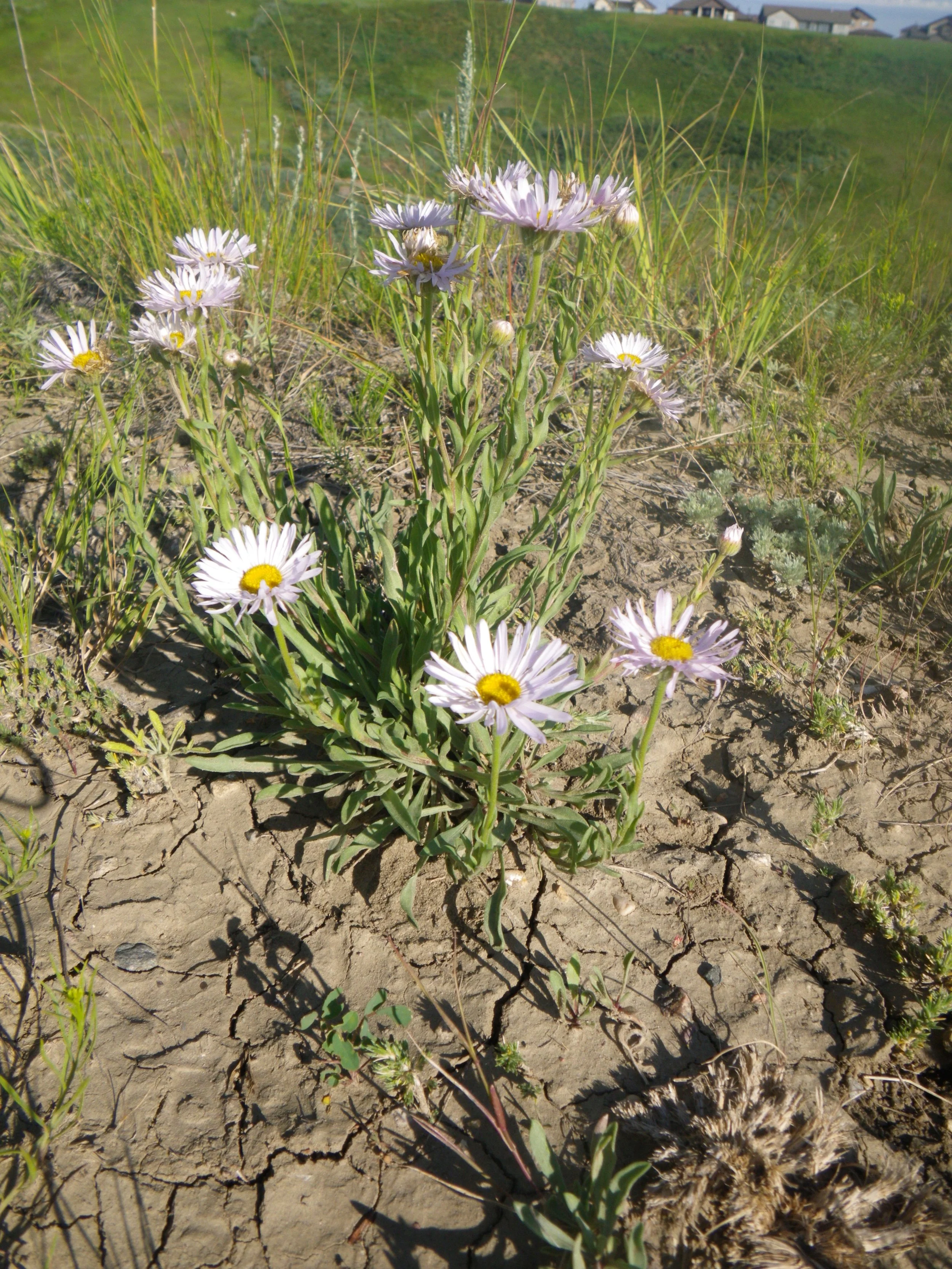
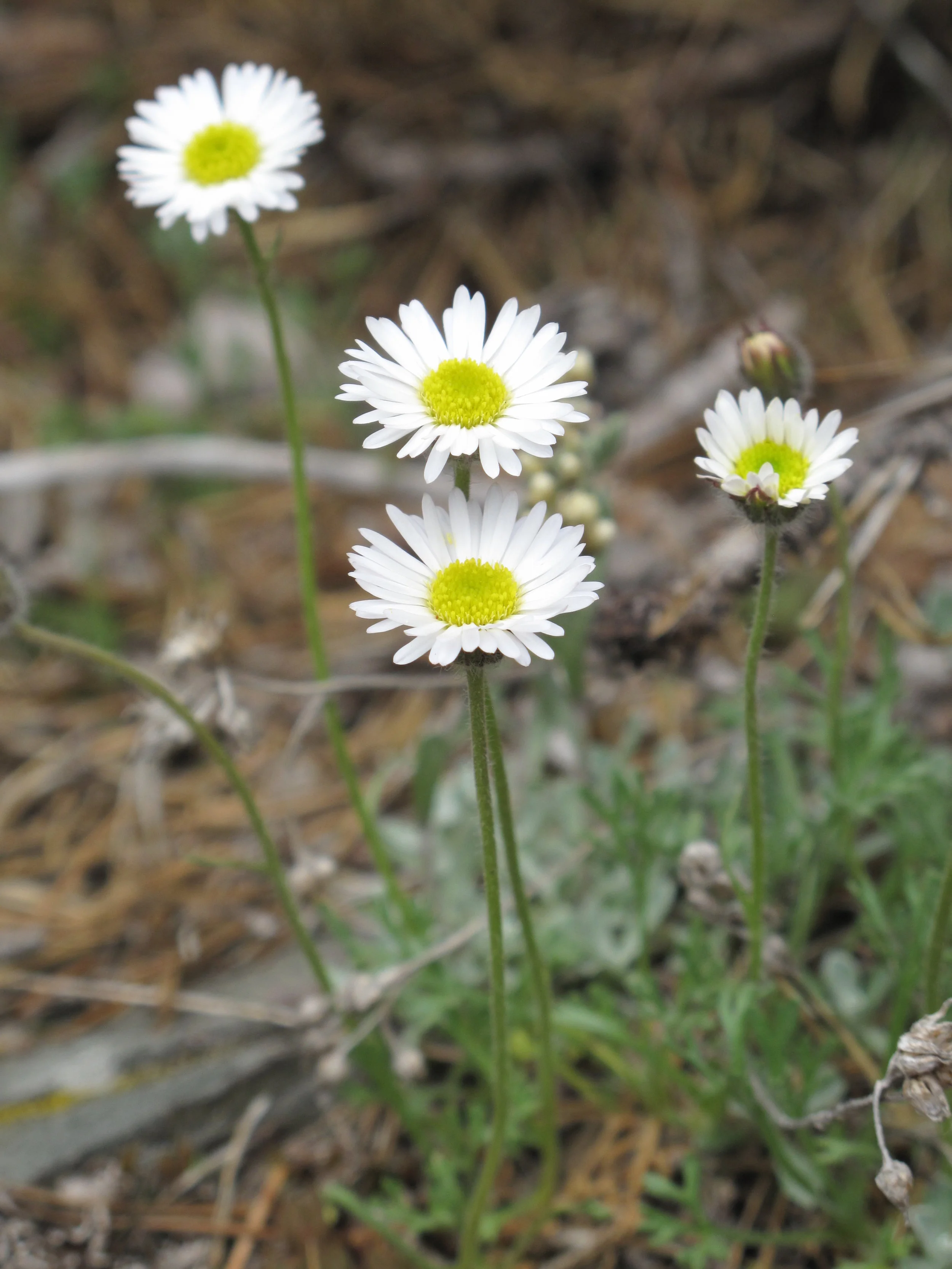











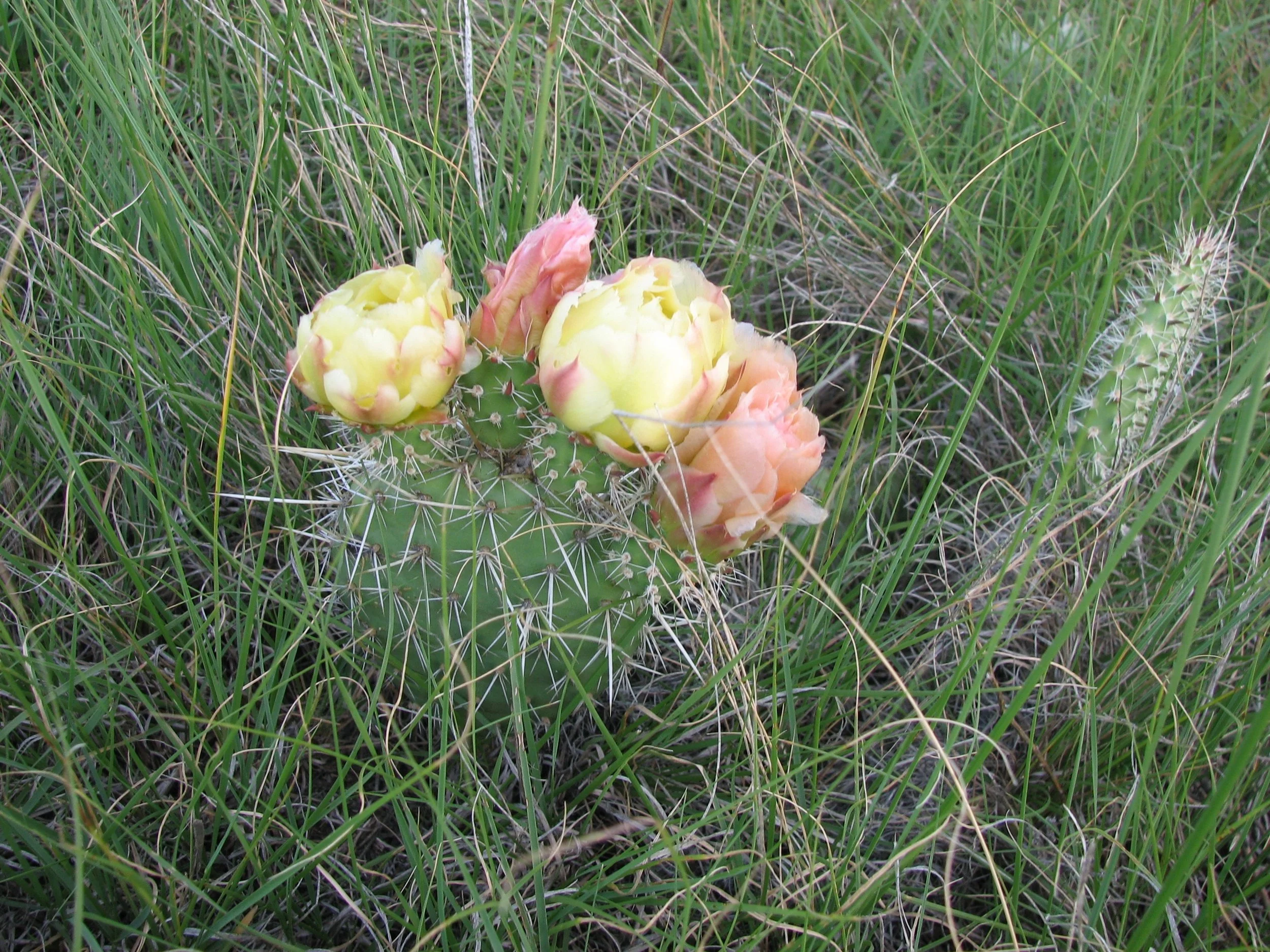









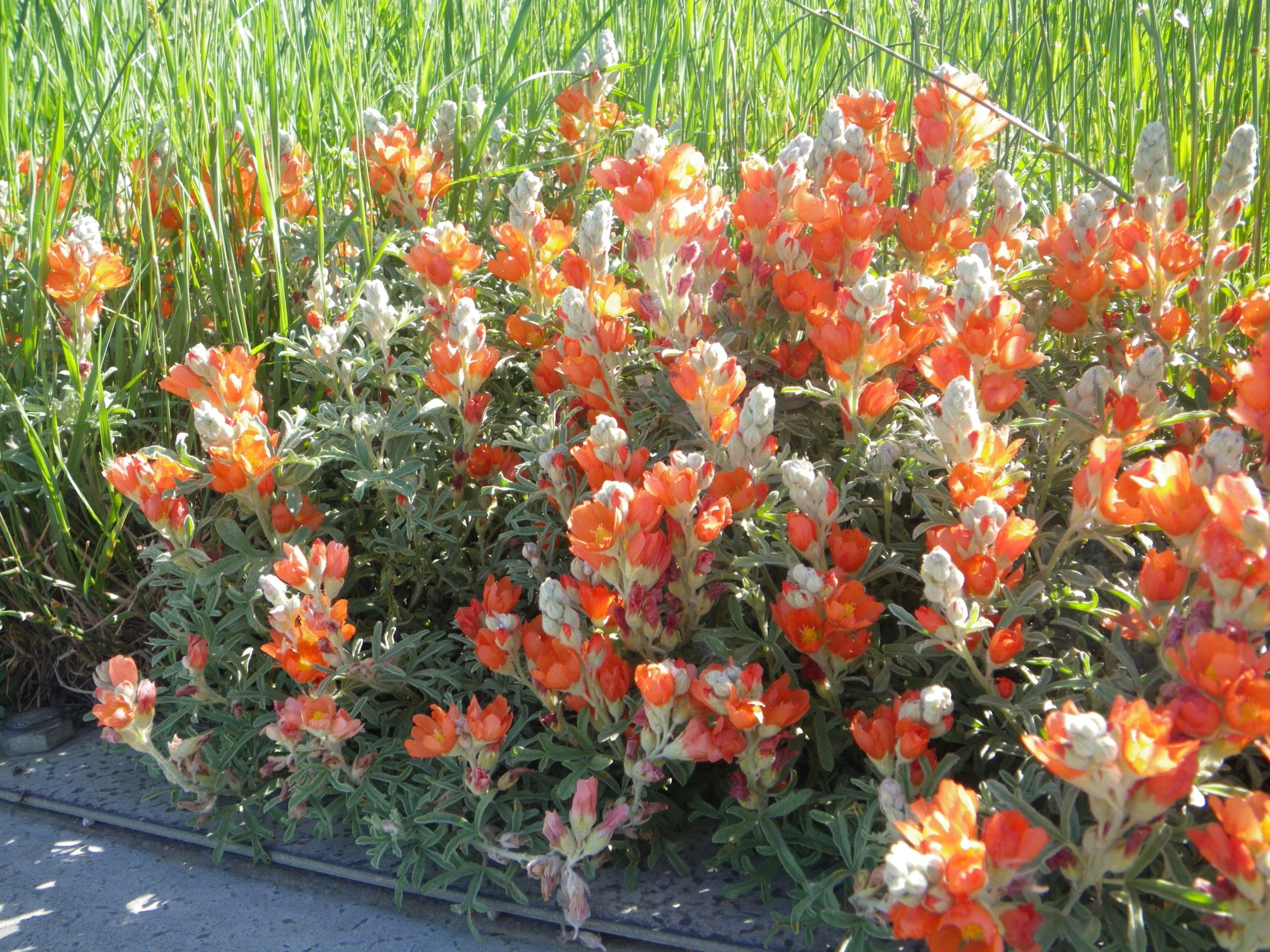









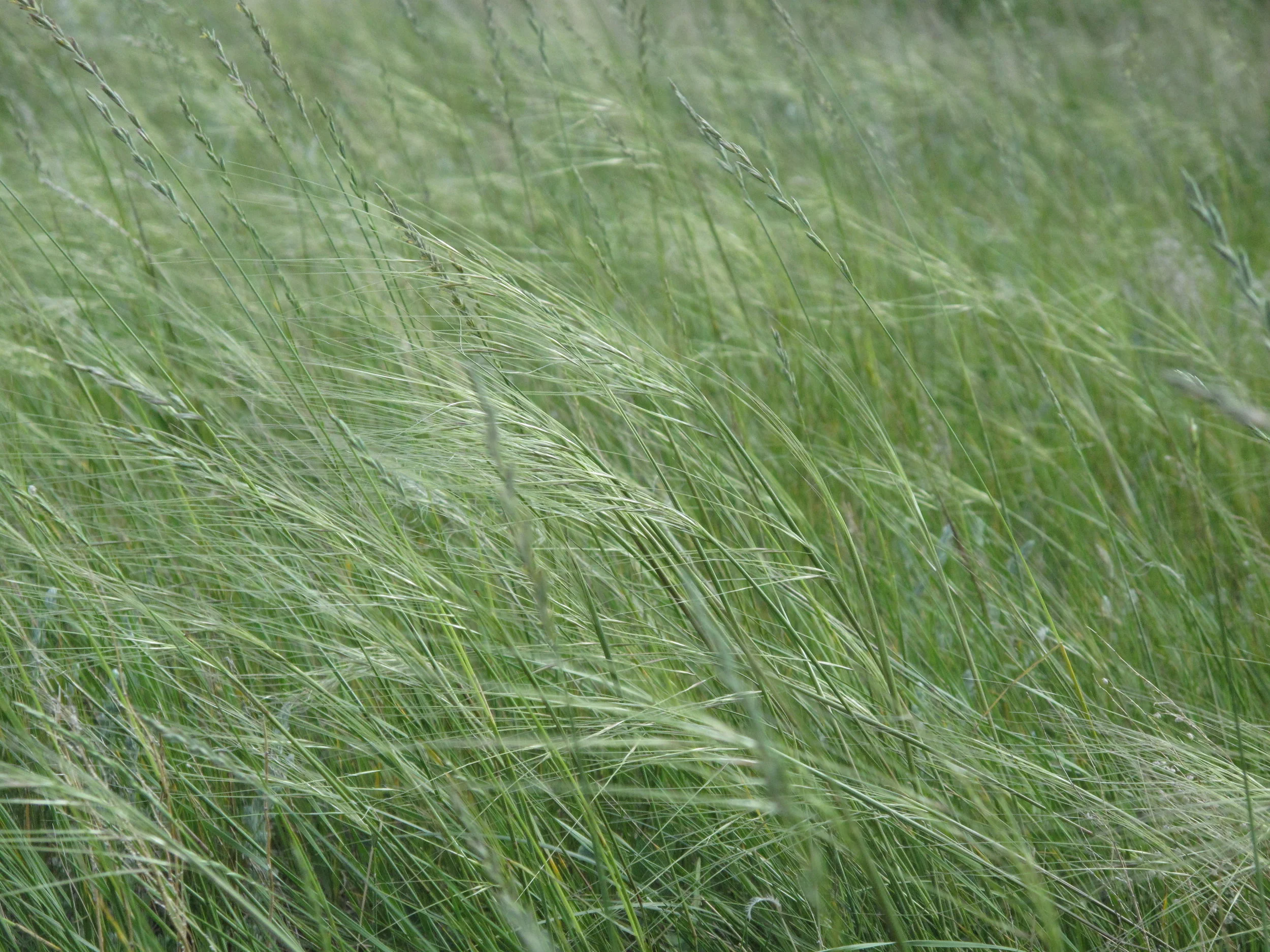
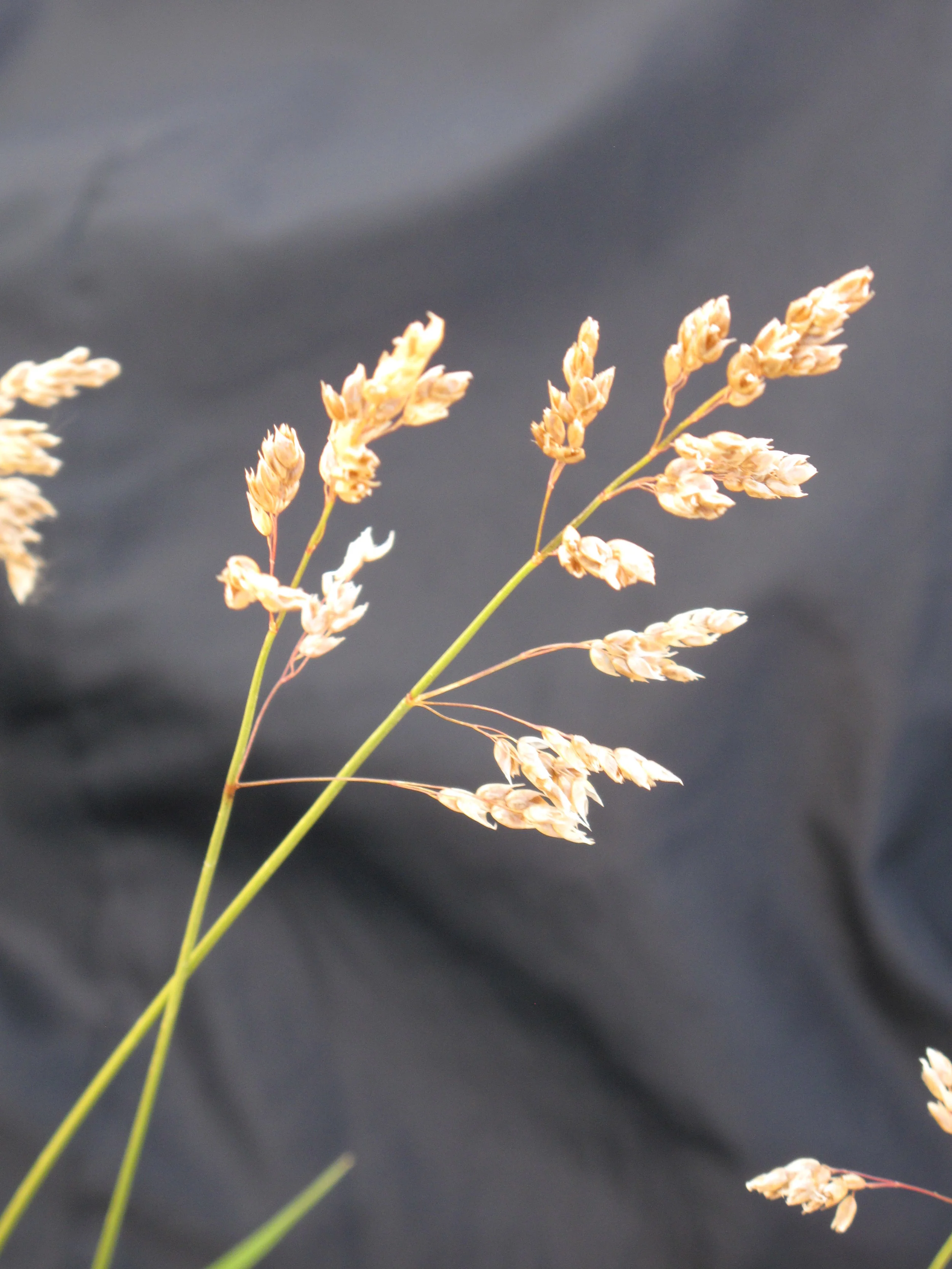


According to Johnston, the saskatoon “was probably the most important vegetable food of the Blackfoot. The berries were used in great quantities in soups, stew, and meats, and were dried for winter use.”